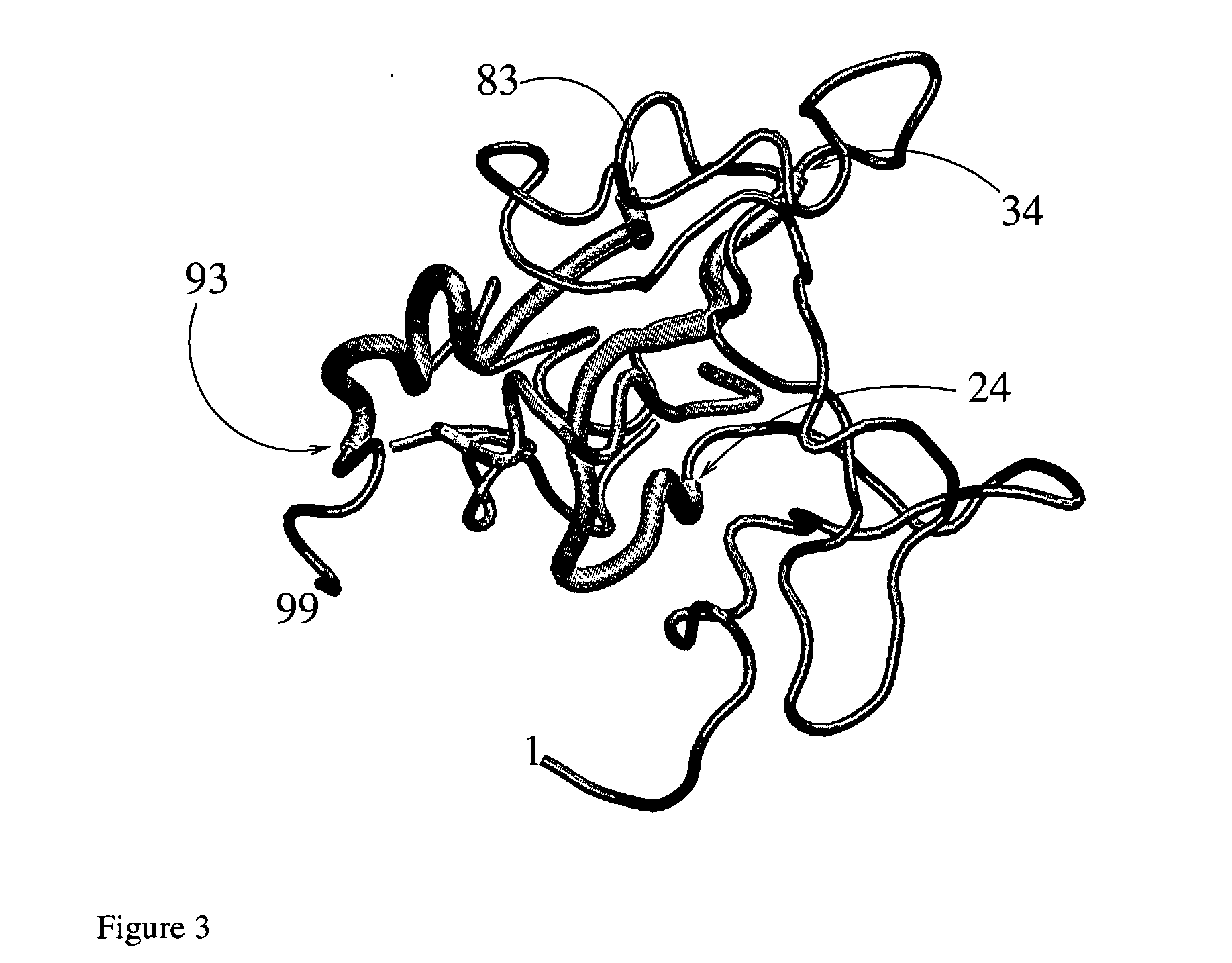Inhibitor of the folding of the HIV-1-protease as antiviral agent
a technology of antiviral agent and inhibitor, which is applied in the direction of peptide/protein ingredient, drug composition, peptide, etc., can solve the problems of loosing the effectiveness of the above drugs, using such compounds in therapy, and unfit enzymes to bind substrates, etc., and achieves the effect of less toxicity
- Summary
- Abstract
- Description
- Claims
- Application Information
AI Technical Summary
Benefits of technology
Problems solved by technology
Method used
Image
Examples
example 1
[0063] Equilibrium simulations [Broglia R A, Tiana G, Sutto L, Provasi D, Simona F, Design of HIV-1-PR inhibitors which do not create resistance: blocking the folding of single monomers, q-bio / 002005 (preprint)] of a system composed of the HIV-1-PR monomer and a number of p-S8 have been performed. The joint probability distribution p(qE,RMSD) of the native relative energy fraction qE and of the normalized (i.e., the total probability divided by the number of residues) RMSD for the case of 3 p-S8 at T=2.5 kJ / mol are displayed in FIG. 2(b), to be compared with that of the monomer alone (FIG. 2(a)). The effect of the p-S8 is to decrease drastically the population of the native state and increase at the same time that of the unfolded state.
[0064] The increase of the peak associated with the unfolded state is caused by the appearance of conformations where the p-S8 peptides are bound to the fragment 24-34 (i.e. the S2-LES) of the protein, preventing the actual S8 LES to find its native ...
example 2
[0069] In order to assess the effect mutations of the protease have on the effectiveness of the p-S8 as inhibitor, we have performed a number of simulations of mutated protease with and without p-S8. Within the framework of the present model a mutation on a given site is made operative by switching off all the native interactions made by that site in the wild-type sequence, treating them as if they were non-native. We have applied this procedure to a number of sites which are known to be mutated by the virus to escape drugs (e.g., 19, 37, 63, 67, 72 and 95). Also to sites which belong to LES (31, 33 and 85) or which interact with a LES (68).
[0070] In FIG. 6 we display the population of the native state pN for the mutated monomeric protease (continuous curve) and for the system composed of the mutated protease and three p-S8 (dotted curve). All mutations except those on sites #85 and 33 have little effect on the stability of the protein. In keeping with this result, the denaturing e...
example 3
[0072] Recombinant HIV-1-Protease, expressed in E. Coli (Sigma Cat. no. P7338) contained five mutations to restrict autoproteolysis (Q7K, L33I, L36I) and to restrict cysteine thiol oxidation (C67A and C95A). The enzyme was stored at (−70° C. as solution with concentration 25 mg / 63 mL in dilute HCl, (pH=1.6)). A chromogenic substrate for HIV-1-PR (Sigma Cat. no. H5535) (with sequence Arg-Val-Nle-Phe(NO2)-Glu-Ala-Nle-NH2) was obtained as a 1 mg desiccate, diluted with 0.1 ml of DMSO, and stored at −20° C. Protease assisted cleavage between the Nle and the Phe(NO2) residues of substrate entails a blue-shift of the absorption maximum (277 nm to 272 nm). It can be adequately monitored observing the continuous decrease of absorbance at 310 nm. A regression of the absorbance at 300 nm against substrate concentration allows to estimate the extinction coefficient of the whole substrate (S=6300±1600 (mol cm)−1). Moreover, the absorbance at 300 nm after complete peptidolysis allows to determin...
PUM
| Property | Measurement | Unit |
|---|---|---|
| concentration | aaaaa | aaaaa |
| pH | aaaaa | aaaaa |
| total volume | aaaaa | aaaaa |
Abstract
Description
Claims
Application Information
 Login to View More
Login to View More - R&D
- Intellectual Property
- Life Sciences
- Materials
- Tech Scout
- Unparalleled Data Quality
- Higher Quality Content
- 60% Fewer Hallucinations
Browse by: Latest US Patents, China's latest patents, Technical Efficacy Thesaurus, Application Domain, Technology Topic, Popular Technical Reports.
© 2025 PatSnap. All rights reserved.Legal|Privacy policy|Modern Slavery Act Transparency Statement|Sitemap|About US| Contact US: help@patsnap.com



